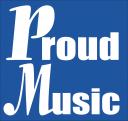Music briefing is to work out the specifications of the music tracks needed for a project, e.g. film, spot, commercials. An example for a project in this context might be a briefing for the music creation of an advertising spot.

The music briefing usually consists of two parts:
1. Specifications about the product and surroundings, in which context the music shall be inserted. (Music briefing in the broader sense)
This specifications define the promotional surroundings, the desired emotionality, the target group, the application area (which medium is used) and the core elements of the brand strategy.
2. Specifications regarding musical attributes. (Music briefing in a narrower sense)
Those might be original musical attributes like the atmosphere, the arrangement, the character, tempo and instrumentation. In this process it is not unusual to use so calles temp tracks – well known productions – to define moods, characters and other attributes to produce a sounds-like-composition.
Based on the music briefing our Proud Music Library can offer either tracks to license, if they fit. The other possibility is to offer you an individual production and composition after the conditions of the music briefing. An accurate music briefing thus is a big factor of success for the whole audiolevel of the product.


